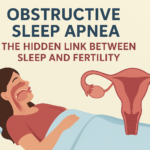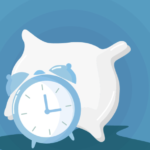
Restless Leg Syndrome(RLS) is a neurological, sleep, and motor disorder. It is also called Willis Ekbom disease. Individuals suffering from this experience an uneasy sensation in the calf area of the legs and feel an irresistible urge to move them. This condition has the ability to disrupt sleep and an individual’s overall well-being.
Symptoms of RLS:
The following are the characteristic symptoms of RLS:
- The recurrent urge of moving the legs is the primary symptom of RLS.
- Sensations while resting:
The sensations for RLS typically begin when a person is stationary or resting for a prolonged period of time for example watching a movie, taking a flight trip etc. These sensations ease out with movement such as stretching, walking, running, etc. These sensations mostly worsen at night.
- The symptoms of RLS mostly occur at night as it is the time when people are mostly resting. It generally starts at around 10 PM and continues till 4 AM. However, in very severe cases, they can occur in the daytime. The uneasy sensations include the feelings of tingling, pulling, bubbling, etc usually beneath the skin. Movement eases out this unpleasant sensation temporarily. It also affects the thighs, feet, and sometimes even the arms.
- Periodic Leg Movement in Sleep(PLMS):
PLMS is very common in patients with RLS. It is reported in about 80 to 90% of people suffer from RLS. In this, people experience contractions and jerks in the leg muscles every 30 – 40 seconds while sleeping. The individual is mostly not aware of it and does not wake up because of these movements. Therefore, it is important that the bed partner who notices it informs the person about the same.
This disorder can start at any age but it worsens with advancing age.
Restless leg syndrome can occur in two forms:
- Early onset RLS: This generally occurs during the teenage years or earlier in individuals who have a family history of it. It is more common in women than in men and pain does accompany this form of RLS.
- Late-onset RLS: This condition mostly results due to some problem of the nervous system and not as a result of family history. Pain in the lower part of the legs is very common in this form of RLS.
Factors that contribute to RLS:
There are many ongoing studies to identify the causes of RLS. However, there isn’t a single or specific cause that is responsible for it. Many factors play a role together towards the incidence of RLS. Iron deficiency, kidney disorders, dysfunction of the dopamine neurotransmitter system, diet, some medicines, and a family history of RLS.
Effects of RLS:
The consequences of RLS are never very severe. However, a person suffering from it goes through a lot of mental distress and sleep deprivation. Lack of sleep causes daytime sleepiness, low concentration, life-threatening mistakes while driving, etc. It also adversely affects performance at the workplace, learning, and memory. If sleep deprivation is severe enough to cause insomnia, then there is a high chance that the person will suffer from hormonal disturbances, anxiety, depression, social exclusion, and mood disorders.
Diagnosis of RLS:
A physician diagnoses RLS on the basis of the description of the symptoms. There is a considerable delay in diagnosis sometimes > 5 years. Detailed information about sleep is very important. One might need to maintain a sleep diary for some amount of time to give the correct record of sleep. Clinical diagnosis of sleep using tests like polysomnography may be required if co-existing OSA is suspected. Along with sleep, other tests related to kidney function, peripheral neuropathy, thyroid, diabetes, working of the heart and central nervous system.
Management of RLS:
Treatment of RLS is initiated depending on the severity and frequency. Some patients have severe discomfort every night, with the inability to fall asleep, keep walking till 2-3 am, and also disrupt the whole family’s sleep. The initial approach is to identify the cause of RLS and eliminate it. This can be some medication, underlying health conditions, etc. Along with this, improving sleep is of utmost importance.
Lifestyle changes can be implemented to improve this condition.
These include:
- Regular exercise.
- A strict NO to smoking and drinking.
- Including iron in the diet or taking supplements for it in case of excessive deficiency.
- Try to avoid the intake of caffeine and other carbonated drinks.
However, if these measures do not work well, then one has to go for SPECIFIC medications prescribed by specialists, that can treat or relieve the underlying causes of RLS.
RLS is a condition that can cause great discomfort to the person suffering from it. It adversely impacts a person’s sleep and in turn his regular life. Diagnosis and proper treatment of this condition are essential to manage it. A supportive family and society play a very important role as the individual goes through major emotional and mental turmoil. Support from friends and family becomes very important.
References:









